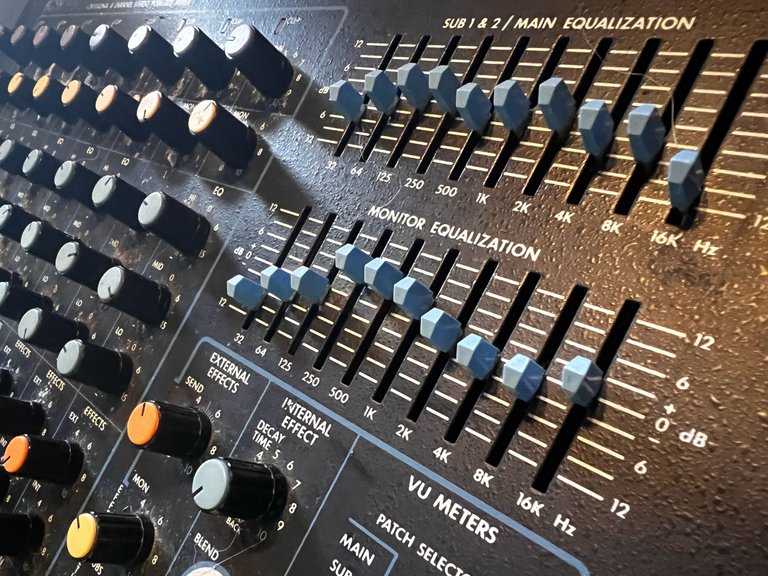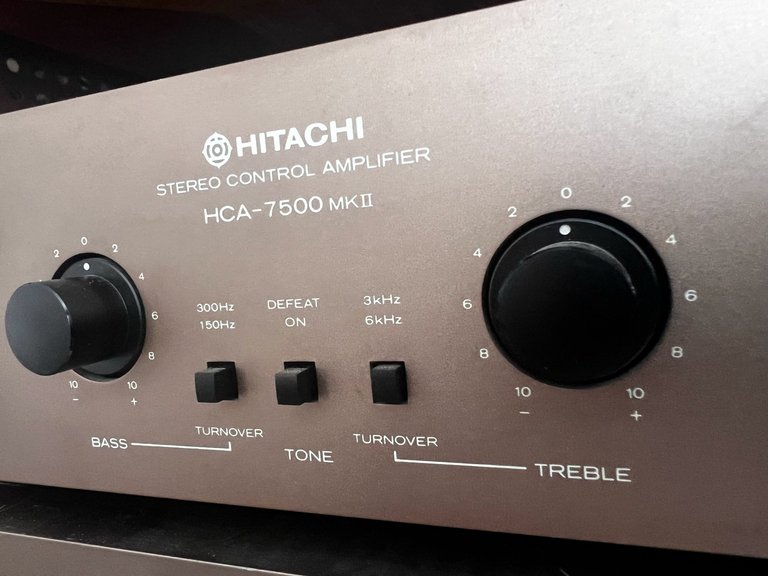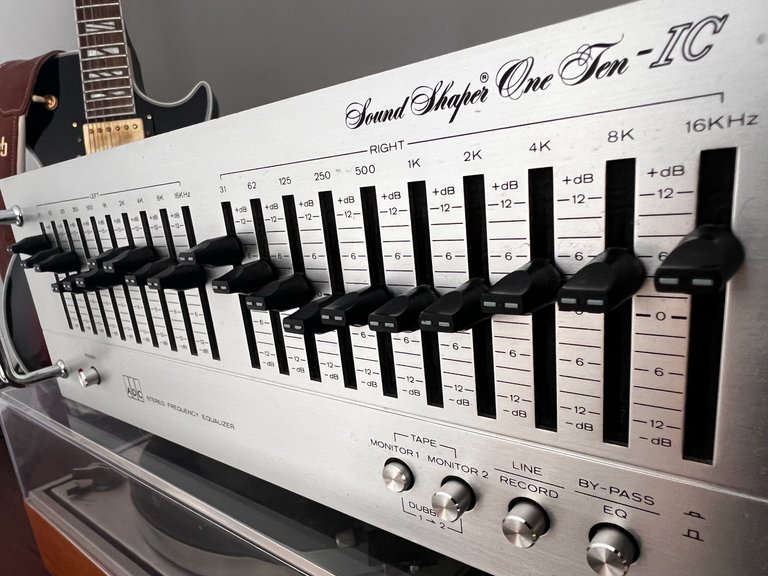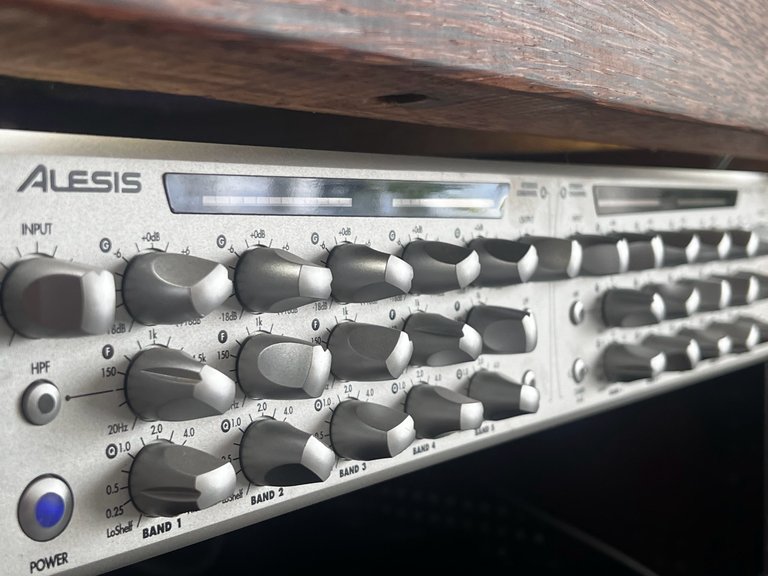"Mastering Your Sound: A Deep Dive into Frequencies and Equalizers in High-End Audio"

IMAGE Mixing board equalizer
Understanding frequencies in high-end audio equipment is crucial for achieving the best sound quality. Frequencies in audio refer to the pitch or tone of the sound, measured in Hertz (Hz). The human ear can typically hear frequencies from 20 Hz to 20,000 Hz. High-end audio equipment is designed to accurately reproduce this range of frequencies.
Built-in equalizers
 IMAGE Equalizer section in a HitachiHCA-7500MKII Pre-Amplifier
IMAGE Equalizer section in a HitachiHCA-7500MKII Pre-Amplifier
Control amplifiers allow users to adjust the frequency response of their audio system directly from the amp.
Pros:
Convenience: Having an equalizer built into the control amp simplifies the setup and reduces the need for additional components.
Integration: Built-in equalizers are designed to work seamlessly with the specific amplifier, ensuring compatibility and potentially better overall performance.
Space-Saving: Eliminates the need for external equalizer units, saving space in your audio setup.
Cons:
Limited Control: Built-in equalizers may offer less precise control over frequencies compared to standalone equalizers.
Quality Variations: The quality of built-in equalizers can vary depending on the amplifier, and they may not match the performance of specialized, high-end equalizers.
Upgrade Limitations: If you want to upgrade the equalizer, you might need to replace the entire amplifier.
Graphic equalizers

IMAGE ADC Sound Shaper One Ten-IC Graphic Equalizer
Graphic equalizers allow users to adjust multiple frequency bands through a series of sliders. These bands are fixed in both frequency and bandwidth.
Pros:
Visual Feedback: The sliders provide a visual representation of the frequency response, making adjustments intuitive.
Ease of Use: Graphic equalizers are user-friendly, especially for those who are not audio professionals.
Multiple Bands: They typically offer a wide range of frequency bands for adjustment, allowing for detailed control over the sound.
Cons:
Fixed Bands: The frequency and bandwidth of each band are fixed, which can limit the precision of adjustments.
Potential for Distortion: Improper use can lead to unnatural sound or distortion, especially if adjustments are extreme.
Space Requirement: As an external component, it requires additional space in your audio setup.
Parametric equalizers

IMAGE Alesis PEQ-450 Parametric Equalizer
Parametric equalizers offer more precise control over frequency adjustments. Users can control the level, the center frequency, and the bandwidth (Q) of each frequency band.
Pros:
Precision Control: Offers more precise control over frequency adjustments, allowing for fine-tuning of the sound.
Adjustable Parameters: The ability to adjust frequency, level, and bandwidth for each band provides greater flexibility.
Sound Shaping: Ideal for correcting room acoustics and specific frequency issues in recordings.
Cons:
Complexity: More complex to use than graphic equalizers, potentially overwhelming for non-professionals.
Cost: High-quality parametric equalizers can be expensive.
Risk of Over-EQing: With greater control comes the risk of over-equalizing, which can degrade sound quality.
In summary, the choice between built-in, graphic, and parametric equalizers depends on the user's needs, expertise, and the specific requirements of their audio system.
While built-in equalizers offer convenience, standalone graphic and parametric equalizers provide more control and precision for fine-tuning the audio experience.
What do you use for a frequency adjustment in your system? Comments will be upvoted!